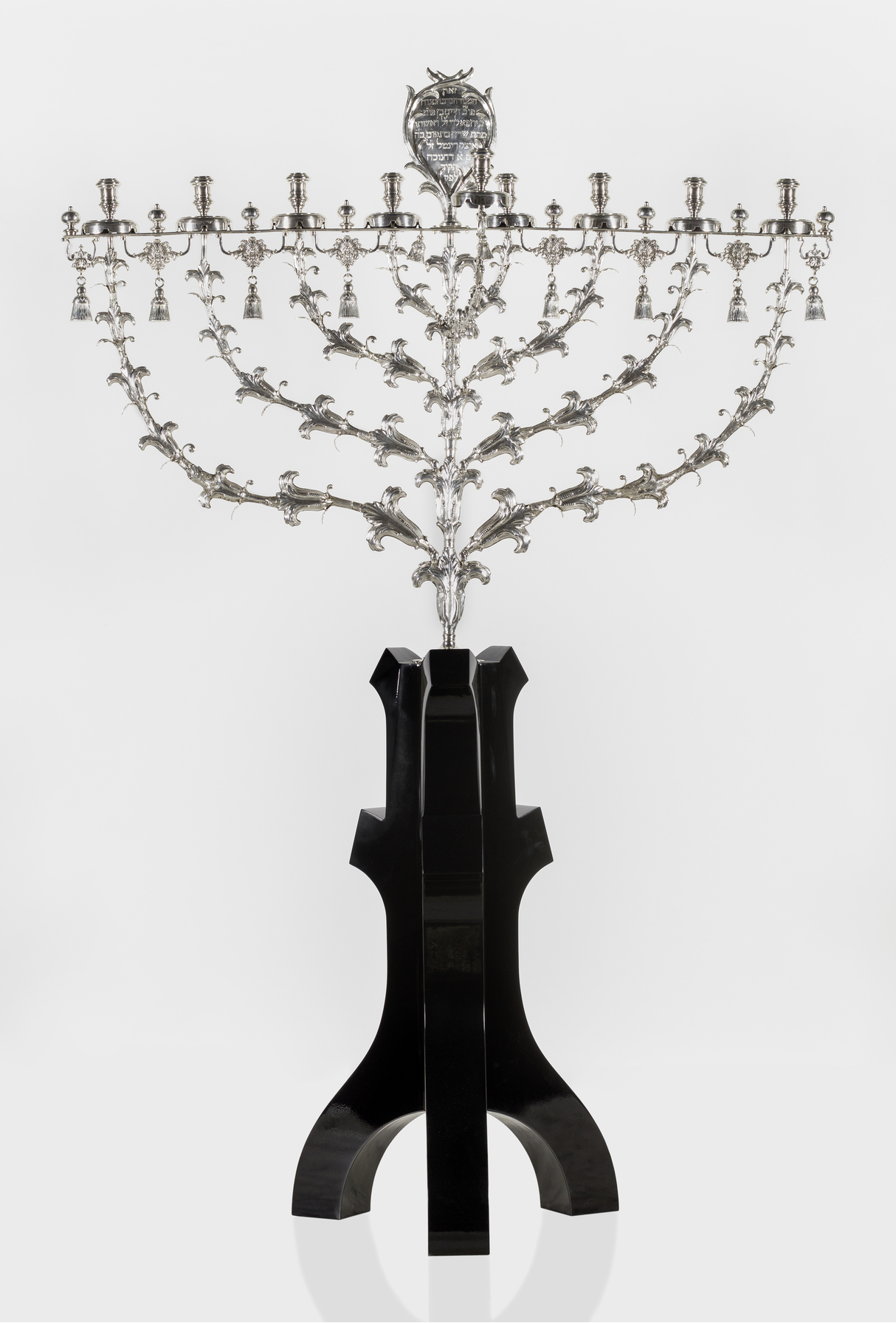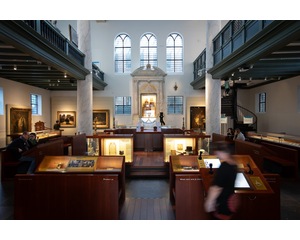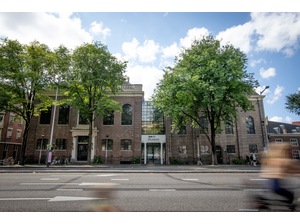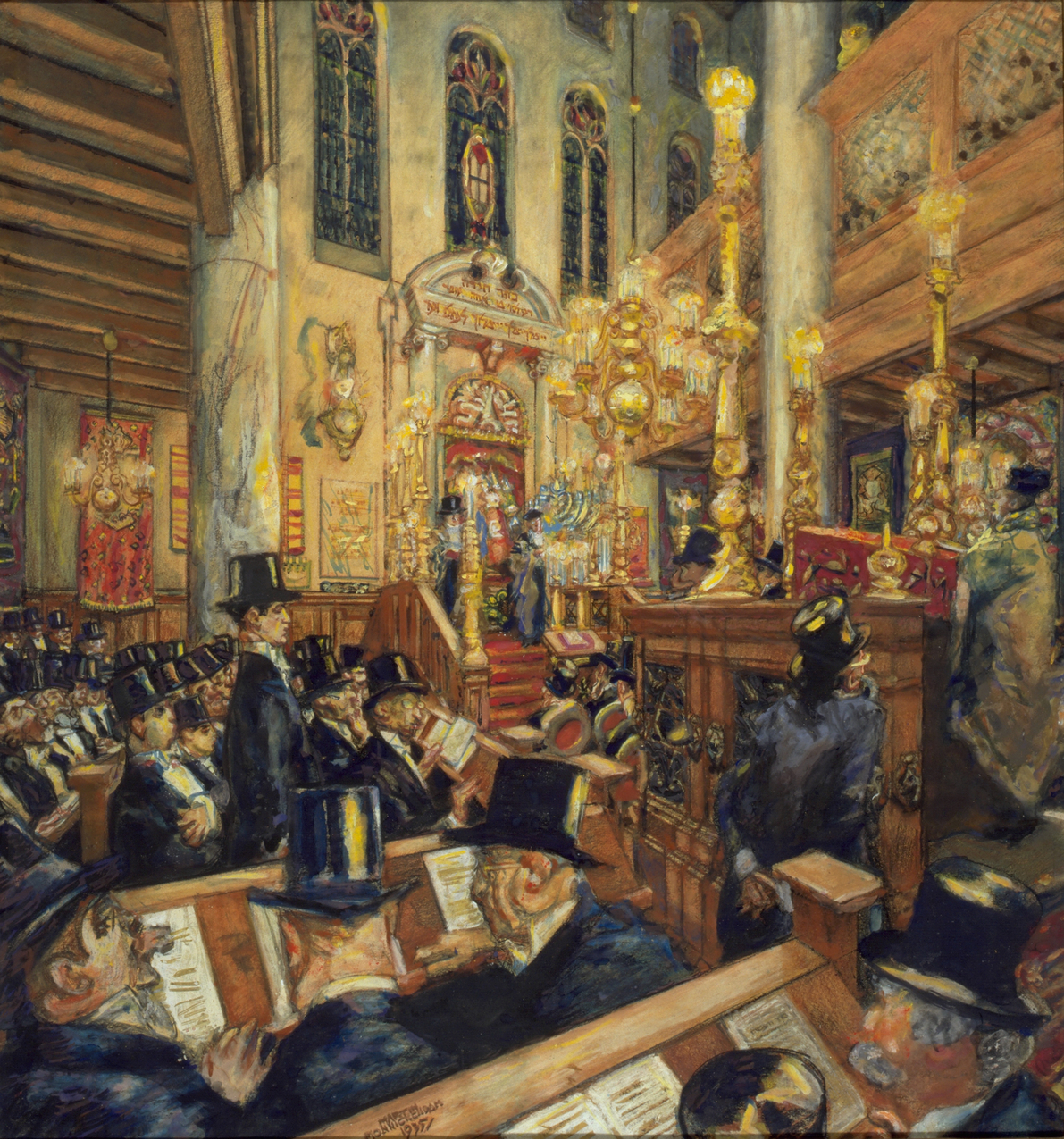After the death of her husband, Sara Rintel donated a precious and monumental hanukkiah to the Ashkenazi Community.
Location
Grote Synagoge
Jonas Daniël Meijerplein 2
Type
Synagogue
Religious community
Former Ashkenazi Community, now Jewish Cultural Quarter
Object
Monumental silver hanukkiah on wooden base
Maker and date
Pieter Robol II
1753
Visit
On display at the museum
Sara Rintel (1690?-1761) came from a prominent Jewish family. Both her father and her husband Chaim Rintel (?-1753) were board members of the Ashkenazi Community of Amsterdam. When Chaim dies in 1753, Sara donates this monumental candelabrum (hanukkiah) to the Jewish community in his memory. It is a good religious act (mitzvah) to donate to the community. Prosperous members like to show their wealth and piety by donating precious items. Sara also donates matching candles every year and has her costly donation inscribed on her grave at the Jewish cemetery in Muiderberg.
Hanukkiah
Candelabrum used during the Jewish festival of lights Hanukkah. During this festival, people light an extra light each time at home and in synagogue for eight days. This recalls the miracle of Hanukkah: after the rededication of the Second Temple in the year 164 before the common era, the Temple candelabrum (menorah) burned for eight days on one small remaining jar of consecrated oil.
This hanukkiah is also called the 'Rintel-hanukkiah', after its donor. It is eyewitness to the long history of the Great Synagogue where it was used. The Great Synagogue is the oldest of the four synagogues within the synagogue complex on Jonas Daniël Meijer Square. Before the synagogue was consecrated in 1671, Ashkenazi Jews held their services in several small (living room) synagogues scattered around the Jewish quarter. Such was the influx of new migrants and refugees from Germany and Eastern Europe in the seventeenth century that in 1670 it was decided to purchase a plot of land and build a new, large synagogue. The Great Synagogue is designed by Elias Bouman (1636-1686) and the festive dedication takes place on 25 March 1671.
Synagog complex
Is formed by the New Synagogue, Great Synagogue, Obbene Shul and Dritt Shul of formerly the Ashkenazi (Ashkenazi) Community. The buildings were closed during World War II by order of the Germans. In 1954, they were transferred to the Community of Amsterdam and restored. In 1974, they were purchased for the symbolic sum of one guilder by the Jewish Historical Museum and furnished as a museum. Now they are part of the Jewish Cultural Quarter.
The ‘Rintel-hanukkiah’ was used in the Great Synagogue until World War II. The building was badly damaged during the war and the Hunger Winter. Only the marble ark remains intact. The ‘Rintel-hanukkiah’ also loses its wooden base. It is replaced by a shorter, marble one. The old base is replaced in 2019 by a black-wood tripod, designed by Dutch designer Piet Cohen (1935), to better reflect the original design.
Lisa de Goffau
Collection curator Jewish Cultural Quarter
Last edited
November 08, 2024
Hanukkiah, Pieter Robol II, Amsterdam, 1753, silver and lacquered wood, 150 x 131 x 44 cm. Foot made by Piet Cohen (1935), Amstelveen, 2019. Jewish Museum collection, acquired with support from the Ministry of OCW, Vereniging Rembrandt, Mondriaan Fonds and VSB Fonds.
Interior and exterior: photography Anneke Hymmen.
Synagogue service in the Great Synagogue on the occasion of the 300th anniversary of the Amsterdam Ashkenazi Community on 14 November 1935, Martin Monnickendam, Amsterdam, 1935, watercolour, paint and pastel on paper, 121 x 113 cm. Jewish Museum collection, acquired with support from the Friends of the Jewish Museum Foundation.
Cohen, J., Kröger, J. en E. Schrijver eds., Gifts from the Heart: Ceremonial Objects from the Jewish Historical Museum, Amsterdam (Zwolle, Amsterdam 2004).









